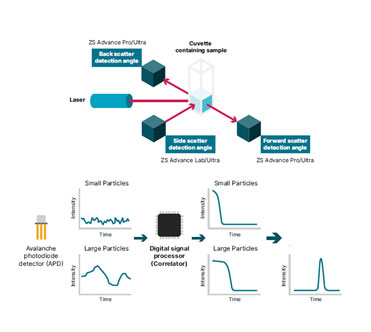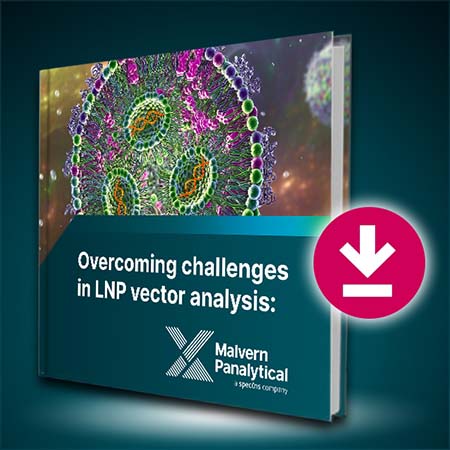3 tools for better lipid nanoparticle size measurements

Little things often have the biggest impact; especially in medicine, where vectors such as lipid nanoparticles (LNPs) hold the key to treating a wide range of challenging medical conditions.
But despite the promise of LNP-based therapies, they present a range of analytical challenges: knowing what attributes to measure, and how best to measure them, can be a sticking point given the structural complexity of LNP-based therapies.
Size matters
When characterizing your LNPs, understanding vector size is crucial. Not only does this give you critical insights into your therapy’s efficacy (since LNP vector size determines tissue penetration), but it also reveals key information about its stability under a variety of environmental stress conditions.
It’s no surprise, then, that accurate size measurements are important across all stages of creating an LNP-based therapy — from early development through to final batch release.
The right tools for LNP analysis
Thankfully, several tools are available to help accurately and reliably measure the size of LNPs.
1. Dynamic Light Scattering (DLS)
DLS is a well-established technique for measuring the size of particles dispersed or dissolved in liquid.
The technique itself is straightforward (Figure 1): a light source illuminates a dispersion of particles, where the particles scatter a fraction of the light in all directions. Some of this scattering is detected at a single, specified angle, where the scattering intensity fluctuations are then analyzed to calculate the particle size.

Critically, DLS boasts several benefits that make it particularly well suited to measuring the size of LNPs. For example, DLS
- Can detect even the smallest LNPs
- Can consistently detect low numbers of aggregates
- Delivers accurate, fast, and reproducible measurements
- Requires very little method development
- Uses minimal sample volumes (~20 µl), non-destructively (so you can preserve and re-use precious samples)
2. Multi-angle dynamic light scattering (MADLS)
MADLS is another powerful size measurement tool. It’s similar to DLS, but instead of measuring samples at a single angle, it measures at multiple angles (Figure 2), offering improved resolution as well as angle-independent particle size distribution.
3. Multi-angle dynamic light scattering (MADLS)
MADLS is another powerful size measurement tool. It’s similar to DLS, but instead of measuring samples at a single angle, it measures at multiple angles (Figure 2), offering improved resolution as well as angle-independent particle size distribution.

MADLS also provides a more accurate size determination of different populations in a sample, and a higher resolution of multi-modal samples.
4. Nanoparticle tracking analysis (NTA)
Then there is NTA (Figure 3), a size-measuring technique very different to both DLS and MADLS.
With NTA, particles in liquid suspension are loaded into a sample chamber, which is illuminated by a laser beam. Particles in the path of the beam scatter the light, which is then collected by a microscope and viewed with a digital camera. The camera captures a video of the individual particles moving under Brownian motion, with software analyzing many particles individually and simultaneously, particle-by-particle. Finally, the NTA software calculates the hydrodynamic diameters of the particles.

Figure 3: Illustration of NTA optical configuration.
This technique offers very high-resolution size measurements — much higher than MADLS, in fact — making it ideal for investigating polydisperse LNP samples. What´s more, NTA enables real-time monitoring of subtle changes in a sample populations’ characteristics, providing you with visual confirmation that you can see with your own eyes. And, as with both DLS and MADLS, NTA requires minimal sample preparation, and consumes only small amounts of sample non-destructively (1 µl, before dilution).
A tricky choice

So, as you can see, there is a suite of powerful tools you can use to explore LNP size. But selecting the one that’s right for your specific sample — and that will give the best answers — is not easy. You must weigh up the benefits against the disadvantages. And, when you do so, you must always keep in mind the question(s) you are trying to answer: are you trying to identify a trend, or do you want to dive deeper into the detail?
To help you select the most appropriate tool for the job, we’ve developed an insight-packed eBook all about confidently characterizing LNPs. In it we delve into more detail about size-measuring tools, including all you need to know to make the best possible selection.
Keen to speed your path to confident LNP size measurement? Download our free eBook today!
